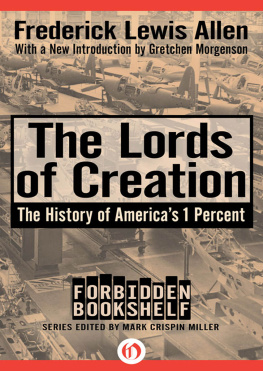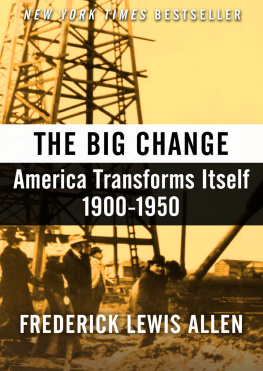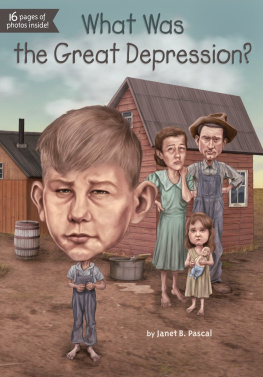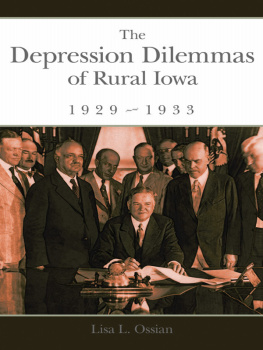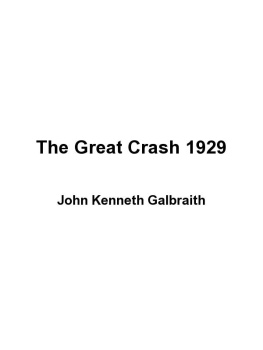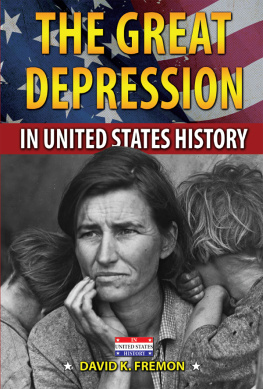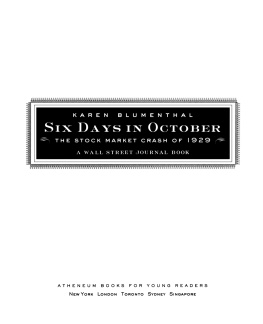PREFACE
Ever since, in Only Yesterday, I tried to tell the story of life in the United States during the nineteen-twenties I have had it in the back of my mind that some day I might make a similar attempt for the nineteen-thirties. I definitely began work on the project late in 1938 and had it three-quarters done by the latter part of the summer of 1939, though I did not yet know how the story would end. The outbreak of war in Europe provided an obvious conclusion, since it promised to end an era perhaps as definitely as the Panic of 1929 had ended one. By an odd chance, the declaration of war upon Germany by the British and French governments took place ten years to a day after that September 3, 1929, which I had already made the subject of my first chapter. It gave me a turn to realize how precisely the course of events had provided me with a decade to chronicle.
The span of time covered in Only Yesterday was from the Armistice of November 11, 1918, to the Panic of October-November, 1929, with a concluding chapter which recited the course of events between the Panic and the spring of 1931 and tried to suggest how the temper of the country had altered during that post-Panic interval. (The book was published in December, 1931.) When I came to plan the present volume it was clear that some overlapping would be necessary, for obviously the story of the nineteen-thirties should start before the Panic and give some idea of the high place from which the country fell during the economic collapse of 1929-32. Hence my decision to begin with a study of things as they were on September 3, 1929 (which I had written in somewhat different form as an article in Harpers Magazine in 1937), and in a second chapter to cover the Panic and the course of events up to the spring of 1931. The story of the Panic itself, however, I have abbreviated in this book, since I told it in considerable detail in Only Yesterday.
The problem of selection and emphasis, always difficult, is of course doubly difficult when one is writing so close to the event. In Only Yesterday I brought into sharp relief manners and customs, fads and follies, and everyday circumstances of life. In the present volume I have done the same thing to some degree, but not quite as much; for the heart of the story of America in the nineteen-thirties was obviously the enormous economic and political transformation which took place, and such trivialities as had been of the essence of life in the United States in the nineteen-twenties were now, it seemed to me, less significant. Future events may make my selection and appraisal of material look very dated; in that case I can only hope my very miscalculations may have a certain paradoxical value as indicating the sort of pitfall into which one readily fell in 1939, even if one were conscientiously intent upon presenting a fair appraisal.
F. L. A.
Chapter One
PRELUDE: SEPTEMBER 3, 1929
1
Do you remember what you were doing on September 3, 1929?
Probably notunless you have an altogether exceptional memory.
Let me refresh your recollection. For if we are to understand the changes in American life during the nineteen-thirties, we must first recall what things were like before this period beganbefore the Panic which introduced the Depression. Perhaps the most convenient way of doing this is to imagine ourselves re-living a single day in 1929: seeing what things look like, listening to the talk, glancing at the newspapers and magazines and books, noticing what are the preoccupations and assumptions and expectations in peoples mindsand doing all this with the eyes and ears and intellectual perspective of today.
I have chosen September 3, 1929, as the day to re-visit, for it was then that the Big Bull Market reached its peak: that the Dow-Jones average of stock-market prices, which had been rising so long and so furiously, made its high record for all time. If there was any single day when the wave of prosperityand of speculationwhich characterized the nineteen-twenties may be said to have attained its utmost height before it curled over and crashed, September 3, 1929, was that day.
So let us go back and look about us.
2
It is a very hot day, this first Tuesday in September, 1929. Not everywhere, to be sure: in the Far West and South the temperatures are moderate. But from the coast of Maine to the wheatfields of Nebraska the sun beats down implacably.
Yesterday was Labor Day; and last night, as the long holiday week end came to its close, the suburban highways approaching the larger American cities were nightmares of congestion as endless lines of cars full of sunburned, sweltering vacationists and week-enders crept cityward through the night, inch by angry inch. On the New Jersey highways leading to New York the tie-up was so complete that people by the thousands, hopeless of reaching the Holland Tunnel for hours, parked their cars in Newark or Hoboken and finished the journey to New York by tube. The railroad stations, too, were jammed with peoplenot only vacationists and week-enders but boy and girl campers returning to town en masse; never had Labor Day traffic been so overwhelming, or the collective discomfort of Labor Day travel been greater. (There were, of course, no air-conditioned cars.)
As you get up on Tuesday morning, September 3, after an airless night, the weather prediction in the morning paper offers you no relief. Fair and continued warm today and tomorrow, it says. You are in for it: for a temperature of 94.2 in New York; 90 in Chicago, Detroit, and Kansas City; 92 in St. Louis; 94 in Minneapolis; 97 in Boston.
After breakfast you go out on the street. The men you see there do not look so very different from those of a decade later, though more of them are wearing starched collars and waistcoats than in subsequent years, and not nearly so many of them are going hatless. But the women are different indeed. The fashionable figure is straight up and down-no breasts, no waist, no hips; and if few of the women you see can even approximate this ideal, at least they are visibly making the effort. Not yet have Mae Wests curves become a national influence. The waistlineif it can be called oneis round the hips. The skirts are short, reaching only two or three inches below the knee: shorter than they will be again until 1939. (The new evening dressesbackless and sleevelesshave panels, godets, or drapery hanging about the ankles, but the dresses themselves are still short.) Every dress has a v-neck, almost every sweater even. If this were a wintry day, instead of one of the hottest days of summer, you would see every woman hugging herself energetically to hold in place her straight wraparound coat. The womens hats are small helmets that fit tightly right down to the nape of the neck and so closely surround the face that a profile view of a woman shows hardly more than an eye, the nose, mouth, and chin, a lock or two of hair to decorate the cheekand the helmet. Not all women wear their hair short, but the approved style is to shingle it in the back and draw it forward over the ears.


